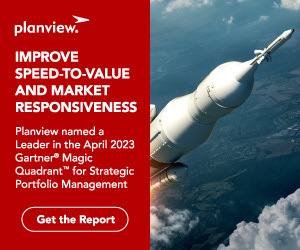
Effective capital investment and expenditure (CapEx) management ensures that financial resources are directed towards investments and initiatives that offer the highest potential returns and align with the company’s strategic objectives. Conversely, poor capital decisions can lead to wasted resources, missed opportunities, and reduced competitiveness, jeopardizing the company’s financial health and future prospects.
Despite the importance of a sound capital management process, many capital-intensive organizations still rely on static spreadsheets or inflexible ERP systems to manage these significant investments. What may have worked when the organization was smaller falters when confronted with larger and more complex decisions. At some point, the organization is left asking itself, “Are we really managing millions of dollars/euros/etc. using Excel?”
Let’s investigate three significant challenges that arise when traditional solutions are employed:
- Capital allocation
- Risk management
- Scenario analysis
Capital Allocation
The fundamental challenge of allocating capital is that the demand for financial resources always outstrips the supply. In the context of capital budgets, it is very rare for an organization to have more money than it knows what to do with—a vast majority of organizations have to budget extremely carefully to achieve their strategic objectives with the available capital. The ability to consistently and rapidly value, prioritize, and adjudicate on capital projects is, therefore, a key competency for organizations.
While capital projects can produce non-financial benefits, capital investment valuation is almost always based on numbers. The process becomes lost in a sea of spreadsheets or force-fit into an ERP system that was built to fulfill other needs.
Using traditional solutions for capital allocation poses the following challenges:
Information Asymmetry: Assumptions are squirreled away in spreadsheets, hidden on hard drives, or buried deep in the bowels of ERP systems, leaving decision-makers without a clear single source of truth.
Inconsistent or Incomplete Evaluation: ERP systems are not designed to accommodate the heterogeneity of different types of capital investments. Spreadsheets are inherently inflexible, leading to varied methodologies across initiatives. When used together, this hodgepodge of tools makes it nearly impossible for organizations to comprehensively value their projects while ensuring a level playing field.
Lack of Tracking and Accountability: Can you imagine trying to “roll back” an ERP system to a previous date or doing the same for dozens or hundreds of spreadsheets? Audit and version histories are clunky at best and nonexistent at worst.
The best solutions combine the positives of each traditional solution while eliminating the negatives, providing:
- Standardized Comparisons: Facilitating apples-to-apples comparisons ensures equitable evaluation across all investments.
- Efficiency: Reduced time on number crunching and updating spreadsheets translates to quicker, more informed decisions.
- Data History: Tracking who changed what when across the full spectrum of costs, schedule, and financial and non-financial benefits, with the ability to roll back to any point in time.
Risk Management
Capital investments often involve significant risks, including cost uncertainty, project feasibility, and regulatory changes. Effectively identifying, assessing, and mitigating these risks is crucial to ensure the success of each investment and protect the organization’s financial health.
Traditional approaches to CapEx management are based on success-case forecasts that assume fixed costs, technical success, and static economic conditions. The one truism about point estimates is that they will always be wrong; only the magnitude of the error is uncertain. So how can organizations incorporate risk-based decision-making into CapEx management?
A best-in-class solution will provide the following measures for mitigating risk across the CapEx portfolio:
- Mechanisms for capturing and quantifying project risks.
- Sensitivity analysis to identify key risks within projects and across the portfolio.
- Analytic capability to produce risk-adjusted financials and metrics.
- Portfolio analyses and visualizations that clearly demonstrate the risk-reward tradeoffs.
With such tools at their disposal, organizations can integrate risk management practices into the capital allocation process with confidence, enhancing their ability to optimize the risk-return profile of their investment portfolio.
Scenario Analysis
CapEx portfolios are characterized by enormous budgets, large individual investments, and long project lifecycles marked by milestones. With so much at stake, it is paramount to provide as much decision-making flexibility as possible.
Making decisions about capital projects in isolation handcuffs the organization, which is why a portfolio approach is a must. By the same token, forcing a simple go/no-go decision about each project also limits the options available. A sound CapEx portfolio process must go well beyond a “take it or leave it” approach.
Best-in-class capabilities include the following:
- Multiple Project Scenarios: The ability to quickly and easily develop alternative spending plans for each investment that reflect different assumptions and priorities allows decision-makers to select not only the best projects but also the version of each project that best fits the portfolio.
- Milestone Management: The magnitude of individual investments can lead to spiky, uneven spending across the course of the year, causing significant cash management challenges. Having the power to pull milestones forward or push them out to smooth out spending can alleviate demands on the corporate treasury.
- Portfolio Scenarios: With CapEx portfolios often measured against multiple strategic objectives, the ability to generate and compare alternative sets of investments is critical. Decision makers can then make tradeoff decisions based on which objectives are most important, providing a clear path to optimizing portfolio value.
Meeting the Challenge with the Right Tools
Getting capital allocation right is essential for companies to optimize returns, mitigate risks, align investments with strategic objectives, and create long-term value for stakeholders. By implementing robust capital allocation processes and making informed investment decisions, companies can enhance their financial performance, resilience, and sustainability in today’s competitive business landscape.
Managing CapEx effectively demands more than spreadsheets or ERP systems can offer. Advanced solutions like Planview Advisor streamline decision-making, ensuring investments align with strategic goals.
Watch a demonstration to see how Planview Advisor can help your organization make the best investment decisions or read The Leader’s Guide to Managing Complex Portfolios.




